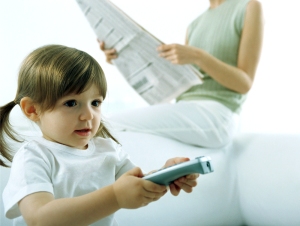 What is the future of IoT? Would it help us live a more sustainable life? Would the world become a better place because of IoT? I decided to interview Martin Willers, a designer and co-founder at People People – a Stockholm based design studio. Martin invites me to meet him at the company’s office on the South side of Stockholm. We sit in a space with a very industrial whitewashed brick design, mirrors and rows of books. He is wearing a beret hat and presents himself in a very matter-of-fact way.
What is the future of IoT? Would it help us live a more sustainable life? Would the world become a better place because of IoT? I decided to interview Martin Willers, a designer and co-founder at People People – a Stockholm based design studio. Martin invites me to meet him at the company’s office on the South side of Stockholm. We sit in a space with a very industrial whitewashed brick design, mirrors and rows of books. He is wearing a beret hat and presents himself in a very matter-of-fact way.
E: Hallo Martin! How did you first become interested in IoT in the first place?
M: For me personally it probably started when I was still at school eight years ago. I used the GPS chip to make a collar for dogs, so that you can always know where your pet is. My product won a business award at the time. I am interested in technology not so much as a commodity but more as a brushstroke so I can help create valuable things for users. I am more interested in technology as enabling solutions.
E: How do you think IoT will help businesses to be more sustainable and make the world a better place?
M: If we take this Finnish company, for example, that makes trash bins with sensors, which tell the truck drivers when the bin is full. This means less fuel is used for the truck going to empty the bin, as well as saving time and resources. The truck is doing a round only when it needs to rather than emptying half-empty trash bins.
However, I believe that sustainability is more interesting when it affects people’s lives directly. Detecting disease – cancer, for example. I have had family members who have passed away because of cancer so I am very passionate about it. The new technology forces non-innovative players to start thinking about it. For example, if there were a cheap cancer sensor, everyone would want the hospitals to get that. But may be the hospitals are not technologically savvy enough to adopt IoT. They have to learn technology; there is no other way. IoT is driving down sensor costs, so two people for example, who have an idea, can design a prototype, do crowdfunding to collect money, build it, do testing in hospitals. All these things are possible now because the cost of the hardware has gone down. You see verticals such as Health, Imaging, and more structural things happening in society because of IoT. But the most important thing is that IoT should be used for something that people can relate to, such as cancer or the ability to check if your infant is breathing for example.
E: That sounds great Martin but let us focus back on the companies.
M: OK, we helped design Watty for example, a sensor that collects and analyses your energy usage, and presents you with what happens in your home – both in real time and over time. This way you will be able to understand and adapt accordingly. It can be things in the moment like “oops the stove is still on at home”. But in the long run, by highlighting wasteful behaviors Watty will also help reduce your energy bill by around 30%. So that kind of innovation investment will help companies as well reduce their energy bill and become more sustainable.
Another illustration is tech companies. Apple now is hiring many car people because they can measure when traffic goes up on the phone, detect congestions, and they earn money based on that content. Tesla, an electric carmaker is dependent a lot on battery technology and solar energy. As the price of both is going down, there is a convergence where the electric car has a business value for many. And now, as they make their car self-driving, all the sensors already exist in the car and you send signals to it over the Internet to steer it. Google is also building a self-driving car that is coming out in 2017. Uber makes the drivers part of the solution – they are a car company without owning any cars. But they say that as soon as they can implement driverless cars, they will do that, since it is the driver who is driving the cost up. So this is more Internet of Cars than Internet of Things. All these players are not car players and they are challenging the typical car players, which are so stuck in their ways. Next year there is going to be four models of self-driving cars. Volvo is releasing self-driving cars in Gothenburg. Their engineers are saying that the self-driving cars are safer than the human driven ones. The difficult part will be giving the control to something that is Internet driven, which is a huge paradigm shift. Having self-driven cars on the road and steering them in the most optimum way will help lower CO2 emissions. They are so much more financially and environmentally sound types of cars. So here you have an example of companies moving towards more environmentally friendly products and helping make the world a better place through the IoT.
E: What is your vision for the future?
M: When I think about the future I think what can be enabled by technology. I do not want to be a visionary I just want to enable solutions. You have to take a lot of things into consideration when you are painting a picture of the future. You have the industry drivers and then there is the people, political and country structures. If we take urbanization for example – we need more places for people to live and more parking spaces. But in the end there is not so much space for more parking lots in cities. So this brings us back to the Internet of Cars solution. Incentives for carbon reduction do exist; the air quality in cities will be positively affected but will that help change the laws to allow self-driving cars? I do not know. The problem is that people need to vote on that decision and there will be friction.
So when talking about a future vision, it seems very irresponsible for me to say that I have a vision on all those three levels. I can have a technology vision, where I design products that people want. I can have a society vision where IoT is enabling things to happen on a political level. I would like to look at the future where you can add solutions rather than problems. I do think that there have never been so many opportunities because technology is so cheap now and a lot of companies are looking at how they can be part of this positive change. Computers will solve problems that you cannot solve in your brain for example. There will be more and more companies that you have not thought of as technology companies utilizing IoT for more meaningful products and services. That will happen for sure in the future.


